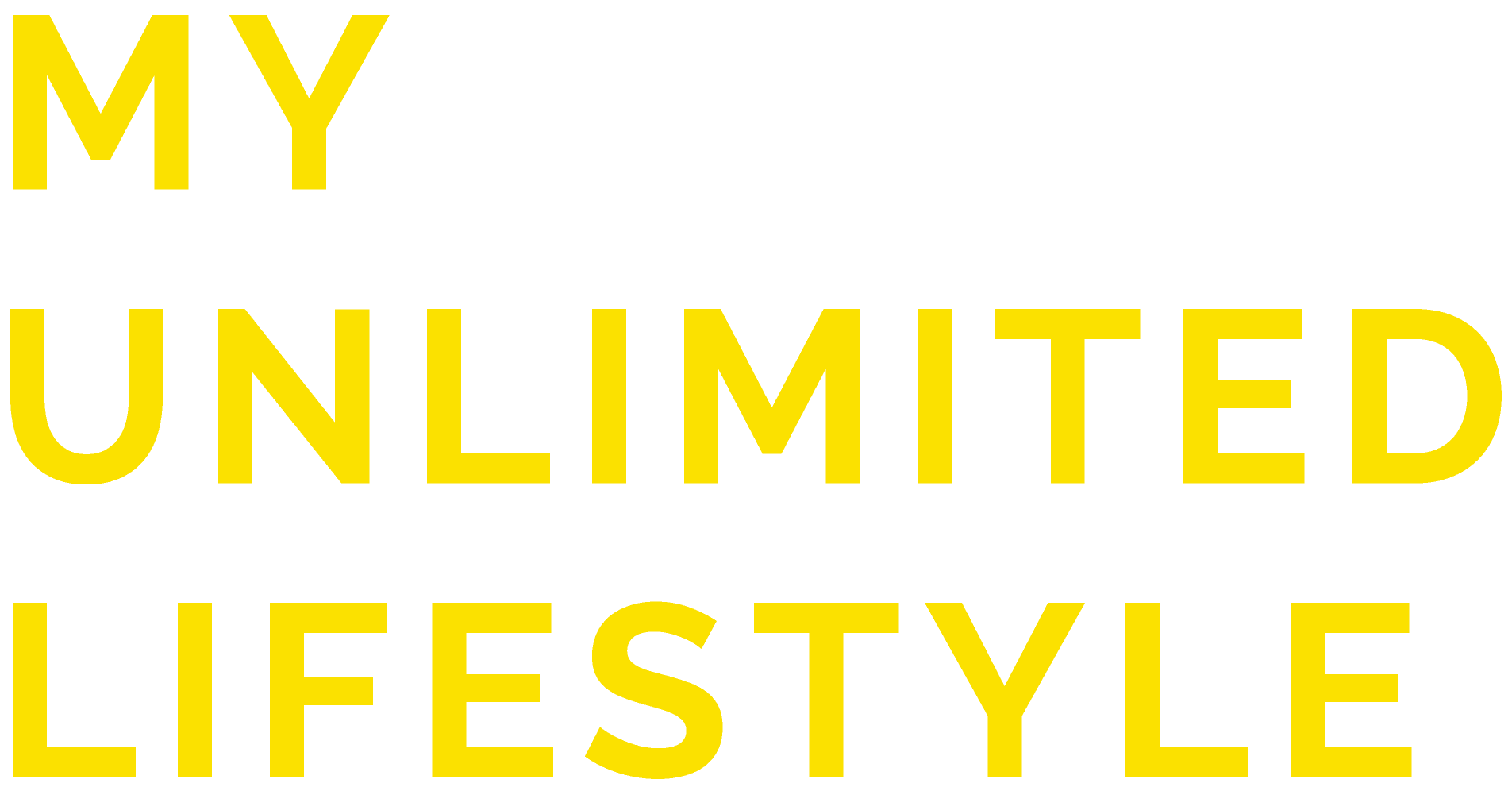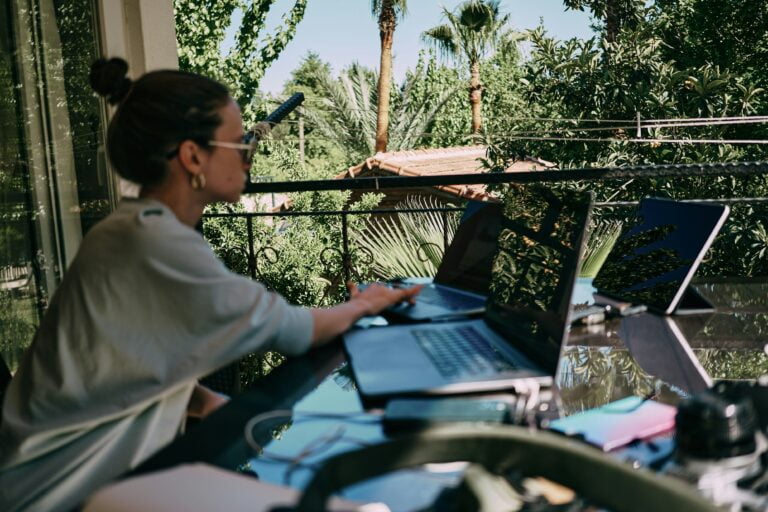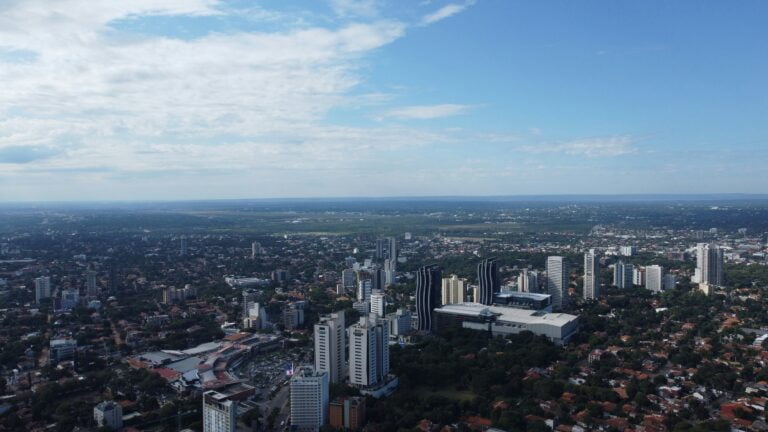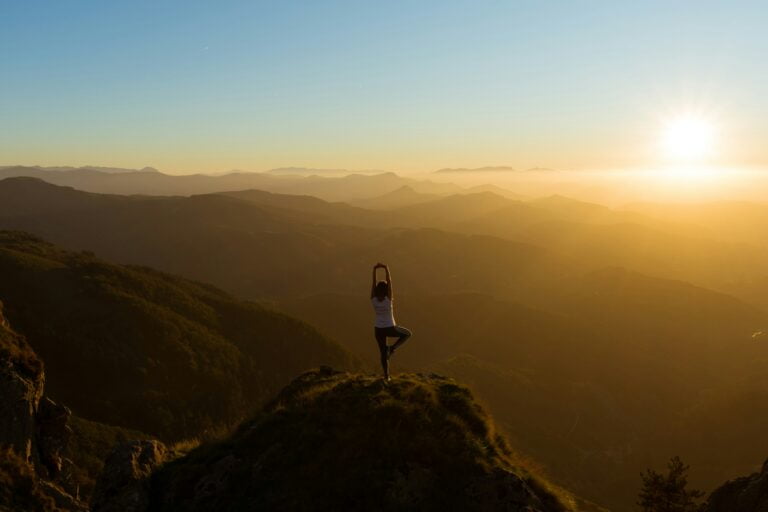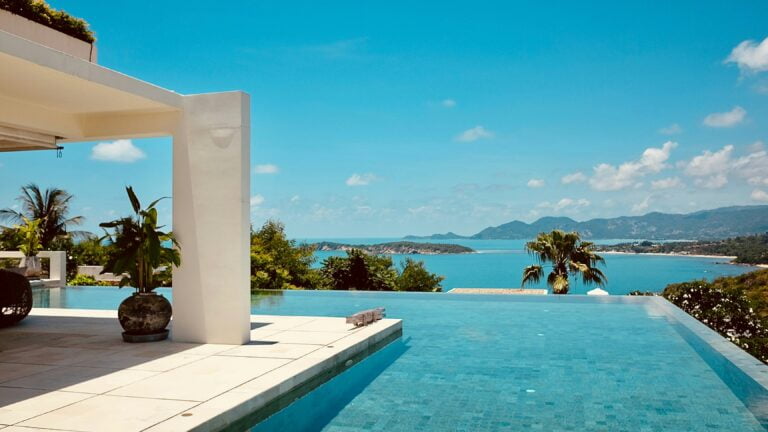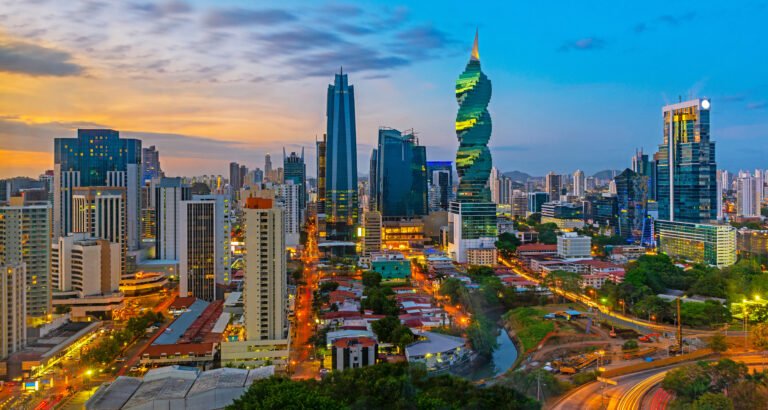Listen this article about San Blas Panama: Experience Island Life here!
When you’re ready to trade the chaos of city life for swaying palm trees and sparkling turquoise waters, head to the San Blas islands of Panama. This secluded archipelago is home to over 300 mostly uninhabited islands and islets, offering a perfect escape for tropical nomads looking to go off the grid.
As an avid traveler always searching for secret paradises, the San Blas Islands have been on my bucket list for years. After countless hours spent dreaming of palm-fringed beaches and open-air cabanas, I finally booked a trip. From the moment I arrived, I was enchanted. No roads, traffic, or sprawling resorts – just rustic cabanas, fresh coconuts, and a sense of blissful solitude. The days unfolded unhurriedly, filled with swimming, snorkeling, napping in hammocks, and bonding with the local Kuna people.
The San Blas islands are a place to disconnect from the world and reconnect with nature. If you’re craving adventure and serenity in equal measure, start planning your escape to this secluded tropical utopia. Life moves a little slower in San Blas, but that’s why it’s so magical.
The Idyllic San Blas Panama Archipelago
The San Blas archipelago is a tropical paradise of over 300 islands along Panama’s Caribbean coast. As a digital nomad, I’ve been fortunate to experience island life in San Blas for months at a time.
The islands are home to the Kuna indigenous people, who govern this autonomous region. You’ll see Kuna women selling handmade textiles and bracelets while most Kuna men work as fishermen. Staying in their rustic cabanas and eating fresh seafood with island families is a highlight.
Transportation between islands is by small boat, called us, and the beaches are pristine. My favorites are those of Isla Perro and Isla Diablo, with soft white sand and swaying palm trees. The sky ignites in a fiery show when the sun sets over the sea each evening.
There’s little infrastructure, so be prepared for basic living. Some islands have solar-powered electricity for a few hours each evening, but others are off the grid. Fresh water is limited, so quick bucket showers and drinking rainwater or purified water are common.
Despite the simplicity, the natural beauty of San Blas made it easy to unplug from the stress of work. My days were filled with swimming, snorkeling vibrant coral reefs, kayaking mangrove forests, and star-gazing at night. The opportunity to connect with the rhythms of nature and thoughtful Kuna locals made this a profoundly peaceful place.
The San Blas Islands are an ideal secluded getaway for any digital nomad or tropical beach lover. The hardest part is leaving this Caribbean paradise behind.
How to Get to the San Blas Panama Islands
Getting to the San Blas islands is part of the adventure. The most common way is to take a 4×4 from Panama City to the port town of Carti, then hop on a boat for the final leg to the islands.
The drive from Panama City takes about 5-6 hours. The roads are bumpy, but the scenery is stunning as you wind through mountain rainforests and indigenous villages. Pack a lunch, chargers, and anything else you might need – there are limited stops along the way.
Once you arrive in Carti, you’ll switch to a motorboat for the 30-minute ride to the islands. The waters can get choppy, so if you get seasick quickly, take something ahead of time. The boat will drop you off at your chosen island, whether a developed one with an eco-lodge or a more rustic one where you can camp under the stars.
Getting around between islands is easy – wave down one of the local boats and negotiate a price to take you where you want to go. No fixed schedules here! Some islands are close together, while others can take over an hour to reach, so plan accordingly.
The journey to San Blas is part of the adventure. With stunning scenery, cultural encounters, and a sense of being in a place that time forgot, the long road and boat ride will be quickly forgotten once you step foot in an island paradise. Enjoy the ride; you’ll be there before you know it!
When Is the Best Time to Visit San Blas Panama Islands
The best time of the year to visit the San Blas Islands is during the dry season, from December to April. This is when there is little chance of rain, and the seas are the calmest, making island-hopping and beach adventures most enjoyable.
December to February are the most incredible months, with average highs of 82 F, so it’s perfect beach weather without being too hot. The crowds are larger during these months, especially around Christmas and New Year’s, as many Panamanians take vacations to enjoy some island life. Accommodation rates are also higher during peak season.
March and April are shoulder months before the rainy season begins in May. The temperatures start to rise to average highs of 86 F, but there are fewer visitors and lower prices for lodging. The seas remain flat, ideal for snorkeling the coral reefs and paddling between islands.
I spent a week in late March hopping between a few of the San Blas Islands and found it was the ideal time to visit. The weather was consistently sunny but not sweltering, the beaches were uncrowded, and I scored a beachfront cabana for under $30 a night. The locals I chatted with said March and April were their favorite months because the climate is pleasant and the tourism season is winding down. Life returns slower, but the rains have yet to begin.
No matter when you go, be prepared for a rustic experience in San Blas. Many of the islands need more infrastructure and access to resources. But the natural beauty, seclusion, and opportunity to connect with the indigenous Kuna people make a trip to San Blas worthwhile any time of year. Just go in with realistic expectations that you’re entering a remote tropical paradise.
Island Hopping in San Blas: Must-See Spots
Island hopping in San Blas is a must when visiting this tropical paradise. There are over 300 islands with pristine white sand beaches and swaying palm trees. Here are a few of my favorites:
Isla Perro (Dog Island)
True to its name, this tiny island is shaped like a dog bone. It’s one of the most popular spots for snorkeling, with crystal-clear turquoise waters and colorful reef fish swimming all around. The beach has bleach-white sand and leans more rustic, with no facilities. Pack a picnic, bring your snorkel gear, and enjoy a full day in this natural wonderland.
Isla Diablo (Devil’s Island)
Don’t let the name scare you away. This island is heavenly, with secluded beaches and lush greenery. It’s home to red poison dart frogs, colorful parrots, and other exotic wildlife. You can hike through jungle trails to secluded coves for a Robinson Crusoe experience. There are basic cabanas for rent if you want to stay overnight.
Isla Perro and Isla Diablo are two of the largest, most developed islands, easily reached on a day trip or overnight excursion from Panama City or a San Blas village. But for the intrepid traveler, there are hundreds more undiscovered paradises to explore. Charter a sailboat to island hop at your own pace, drop anchor in secluded bays, and land on empty beaches. Some islands have basic infrastructure, while others remain entirely undeveloped. This is what tropical island dreams are made of!
The San Blas archipelago remains largely undeveloped, with little access other than by boat. Most islands have no facilities, so you’ll need to pack your own food, water, and supplies. But the rewards of pristine natural surroundings, secluded beaches, and a tranquil pace of life make the effort worthwhile. If you crave adventure in an authentic tropical setting, island hopping in San Blas should be at the top of your list.

Activities in San Blas Panama: Relaxing and Adventurous Options
There are many ways to experience island life in San Blas, Panama. As a digital nomad who prefers a mix of relaxation and adventure, San Blas offers the perfect combination of activities for me.
Relax on the Beach
The beaches in San Blas are some of the most beautiful I’ve ever seen, with powdery white sand and swaying palm trees. I can spend hours lounging in the sun, swimming in the crystal clear turquoise waters, or kayaking around the islands. The pace of life is slow here, giving you time to unwind, de-stress and live in the moment.
Meet the Kuna People
The Kuna indigenous people have inhabited the San Blas islands for centuries. I learned about their culture and day-to-day life by visiting a local Kuna village. The Kuna women are known for their colorful molas, handmade textiles featuring intricate designs. Browsing the selections of molas makes for an enjoyable cultural experience and a chance to pick up a unique souvenir.
Go Island Hopping,
With over 300 islands, San Blas has so many places to explore. Island hopping tours take you to some of the most secluded islands where you can swim and snorkel in privacy. I spotted starfish, colorful fish, and even dolphins during my tour. The boat rides between islands also provide scenic views and photo opportunities of the archipelago.
Zipline Through the Jungle
For adventure seekers, San Blas offers thrilling activities like ziplining through dense jungle. Gliding high up in the canopy provides a bird’s eye view of the rainforest and wildlife below. After an adrenaline rush, I was ready to return to the beach for rest and relaxation. The combination of adventure and leisure is what I love most about San Blas.
Whether you want to fill your days with activity or do nothing at all, San Blas Panama has something for everyone. The natural beauty, seclusion, and slower pace of island life create the perfect escape for digital nomads and tropical wanderlusts alike. I know I’ll be back again soon!
Experience the Kuna Yala Indigenous Culture
Experiencing the Kuna Yala indigenous culture was a highlight of my trip to San Blas. The Kuna people, known as Guna, have inhabited the San Blas archipelago for centuries. They were one of the first indigenous groups to gain autonomy from Panama.
Preserve Their Traditions
The Kuna strive to preserve their cultural traditions, especially regarding their dress, language, and arts. Kuna women are known for their colorful molas, handmade textile panels featuring geometric designs that they sell to visitors. Some Kuna still live in thatched huts and cook over open fires. They speak Kuna, their native language Spanish, and some English.
Interacting with the Kuna people as I traveled between islands was fascinating. Some would paddle up in dugout canoes to sell their molas and crafts directly to us. Others I met while exploring the islands, learning about how they harvest coconuts and plantains to support their families. The Kuna children were incredibly endearing, greeting me with enthusiastic “Holas!” as I walked by their thatched huts.
Community Governance
The Kuna have a unique community governance system with local congresses that handle judicial, economic, and political matters. They are very proud of their autonomy and independence. Some rules they enforce seem strict to outsiders, like not allowing foreigners to stay overnight in Kuna villages or requiring Kuna women to dress traditionally. But this dedication to preserving their cultural identity is admirable.
My time in San Blas gave me a glimpse into a way of life so different from my own. Witnessing how the Kuna people live sustainably and simply in harmony with nature, and each other left a lasting impression. Their warmth, joyfulness, and sense of community are an inspiration. Experiencing the Kuna culture made my island adventure in San Blas genuinely unforgettable.
Where to Stay: Rustic Cabanas and Luxury Resorts
When planning my trip to San Blas, the hardest decision was where to stay. As an avid tropical nomad, I like to immerse myself in the local culture as much as possible. In San Blas, that means staying in one of the rustic cabanas dotted along the islands. However, a few luxury resorts also offer a comfortable home base to explore from.
Rustic Cabanas
The most authentic place to stay is in one of the locally-owned cabanas. Usually constructed of bamboo and palm fronds, these open-air huts line the beaches of many islands. Expect sand floors, hammocks, and only a little else. You’ll get an up-close view of island life and sleep to the sound of gentle surf. Some cabanas have private bathrooms and electricity for fans, but be prepared for primary conditions. The seclusion and natural surroundings more than makeup for any lack of amenities.
Some recommended cabana operators are Islas Secas, Octopus Lodge San Blas, and Coco Blanco. Rates are very affordable, around $30 to $100 per night. These cabanas give you an actual Robinson Crusoe experience.
Luxury Resorts
If creature comforts are a must, a few luxury resorts in San Blas offer high-end amenities with an eco-friendly vibe. My top choice is Yandup Island Lodge, a private island with just 10 bungalows. Each has a king bed, fan, electricity, and a private bathroom. Rates include all meals, focusing on fresh seafood and tropical fruits. Other perks are a bar, a small pool, and daily excursions to surrounding islands.
While pricier than the local cabanas at $200 to $500 per night, resorts like Yandup balance rustic and refined. You still get a secluded tropical escape with upgraded facilities and service. A cabana or a luxury resort would be an ideal place to call home in San Blas. The choice comes down to how much you value amenities versus an authentic experience.
Typical Cuisine in San Blas Panama: Fresh Seafood and Coconut Rice
The food in San Blas is as fresh and vibrant as the natural surroundings. Living on islands means seafood is a staple, and coconuts are abundant.
On my first morning in San Blas, I awoke to the smells of fried fish, plantains, and rice drifting through the open-air cabana. Breakfast was red snapper, caught that morning, served with coconut rice, fried plantains, and fresh mango juice. The fish was delicate and flaky, and the rice was lightly sweet from coconut milk.
Lunch and dinner featured similar fare, with fresh lobster, crab, shrimp, or tuna replacing the fish. One night our host family made a seafood stew called arroz con coco y mariscos, brimming with shrimp, mussels, and whitefish in a creamy coconut broth over rice. Ceviche, that is raw fish “cooked” in lime juice, is also famous – the lime juice chemically “cooks” the fish without heat, preserving its soft texture.
In between the fresh seafood, we snacked on fried plantains, called patacones, and fresh coconuts. The Kuna would shimmy up palm trees, machete in hand, to cut down coconuts for us to drink right on the spot. Nothing is more refreshing than chilled coconut water and soft coconut meat on a hot day in the islands.
While the men traditionally fish, women rule the kitchen. Cooking is done over wood fires, without ovens, microwaves, or other modern equipment. Despite the essential tools, the Kunas are masterful cooks, turning out flavorful and filling meals with little waste.
The Kuna diet is all-natural and organic by necessity. Most meals are gluten-free, dairy-free, and vegetarian-friendly. The seafood, tropical fruits like pineapple and bananas, rice, plantains, and palm oil provide a balanced diet high in nutrients. Little goes to waste in San Blas, with leftovers and byproducts often fed to animals or used as compost.
Overall, the food in San Blas is healthy, sustainably sourced, and deeply satisfying. The fresh ingredients and seaside ambiance make every meal like an island escape. If you visit San Blas, come with an empty stomach – you’ll want to try it all!

FAQs About Traveling to San Blas Islands, Panama
I’ve got a few frequently asked questions about traveling to the San Blas Islands to share from my experience.
Do I need a visa to enter Panama?
Most tourists, including US, Canadian, and Western Europe citizens, don’t need a visa for Panama and will receive a 180-day tourist stamp upon entry. Ensure your passport is valid for at least six months from your trip date.
How do I get to the San Blas Islands?
The only ways to reach the San Blas archipelago are by small plane or boat. Flights depart from Panama City and take about 30 minutes. The ferry ride from Panama City takes about 5-6 hours. I chose to fly since I only had a limited time and wanted to maximize my island experience. The views from the plane were breathtaking!
Where do I stay?
Accommodation options in San Blas are fundamental. The most common are family-run cabanas and huts. I stayed in a rustic beach cabana with no electricity. Still, it did have a private bathroom and mosquito netting over the beds. The cabanas are open-air with thatched roofs. It’s a very eco-friendly and authentic way to experience the islands.
Do I need to book tours in advance?
I recommend booking your flight or ferry ticket in advance, especially if traveling during the dry season from December to April. As for tours and activities, it’s best to arrange them once you arrive on the islands. This allows for flexibility if the weather changes or you want to stay longer on an island. The San Blas Community Center can help organize tours, transport, and accommodation.
What’s the food like?
The cuisine is simple but fresh and tasty. You’ll find a lot of coconut milk, seafood like lobster, crab, fish, plantains, yuca, and tropical fruits. My favorite was the whole fried fish with coconut rice. Be prepared for small portion sizes as the food is made to order. And don’t forget to try the fresh coconut water!
The natural beauty, laid-back vibe, and seclusion of the San Blas Islands make it a perfect tropical escape. I hope I’ve answered some of your questions about visiting this little slice of paradise. Let me know if you have any other questions!
And there you have it, a glimpse into the island life in San Blas. After spending a few blissful days sailing through the archipelago, I can see why San Blas attracts travelers seeking seclusion and natural beauty. The pace of life moves slowly, giving you time to soak in the sunsets, connect with the locals, and find adventure. If you want to escape the grind, pack light, bring an open mind, and head to San Blas. The islands have a way of working their magic on you, and when it’s time to leave, you’ll do so with sun-kissed skin, salt in your hair, and a lifetime of memories. For me, the most challenging part was saying goodbye. But the call of the islands is strong, and I know I’ll be back again soon.
